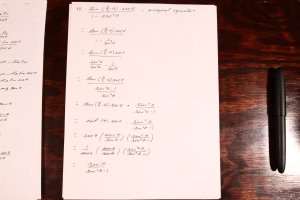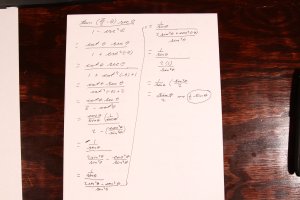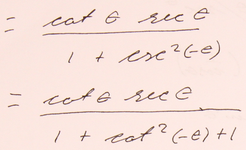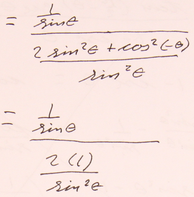jddoxtator
New member
- Joined
- May 28, 2024
- Messages
- 28
I am still trying to learn how to fully navigate Trigonometric Expression Simplifications.
It seems I always have a hard time when I get down to a combination of a trigonometric function and a negative 1 or positive 1 that is not a direct identity.
I have attached one that I am stuck on, I am sure there is a very specific rule that I am either unaware of or not implementing correctly.
It seems I always have a hard time when I get down to a combination of a trigonometric function and a negative 1 or positive 1 that is not a direct identity.
I have attached one that I am stuck on, I am sure there is a very specific rule that I am either unaware of or not implementing correctly.




